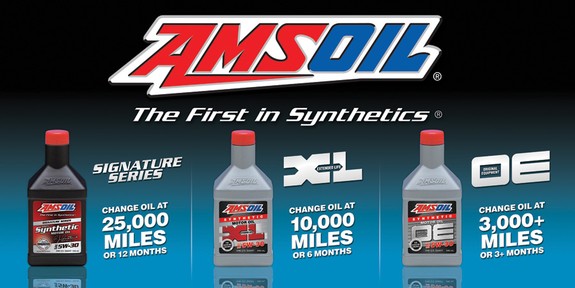Can I Mix Different Oils? - Select Synthetics - AMSOIL Authorized Dealer



Main menu:
- Home Page
-
Products
-
AMSOIL Products
- Shop by Product
- Shop by Equipment
- Shop by Category
-
Product Lookup Guides
- Product Lookup Guides - Home
- Filter Lookup Guides
- Auto & Light Truck Lookup Guide
- Motorcycle & Dirt Bike Lookup Guide
- Harley-Davidson Products Guide
- All-Terrain Vehicle Lookup Guide
- Utility Terrain Vehicle Lookup Guide
- Snowmobile Lookup Guide
- Marine Outboard Lookup Guide
- Personal Watercraft Lookup Guide
- Small Engine Lookup Guide
- Free Product Catalog
- AMSOIL - The Blog
- AMSOIL YouTube Videos
- AMSOIL Performance Tests
- The AMSOIL Newsstand
- AMSOIL Testimonials
- AMSOIL Guarantee
- Safety Data Sheets
- Oil Analysis Services
- Shipping & Product Return
- Safe & Secure Shopping
-
AMSOIL Products
- About AMSOIL
-
Oil Basics
- What Is Motor Oil?
- What Is Oil Viscosity?
- What Does Motor Oil Do?
- Why Does Oil Need To Be Changed?
- How Often Should I Change My Oil?
- When Should I Do My 1st Oil Change?
- Can I Mix Different Oils?
- Lubrication Regimes
- Newtonian vs. Non-Newtonian
- Base Oil Groups
- Motor Oil Specifications
- Service Classifications & Grades
- Oil Evaluation Tests
- Oil Filtration
- What is Oil Analysis?
- Why Synthetics?
- Buy Wholesale
- FAQs
- Contact Us
Oil Basics


Can I Mix Different Oils?
Is it okay to mix different oil brands or types (i.e. synthetic oil and conventional oil)?
Yes, you can safely mix one brand of oil (e.g. Mobil 1) with a different brand (e.g. AMSOIL) or conventional oil with synthetic oil (in fact, that’s what a synthetic blend is). Most synthetics today are fully compatible with conventional oils and can safely be mixed.
However, just because you CAN it doesn’t mean that you SHOULD. Let me explain.
Even though AMSOIL motor oils are totally compatible with conventional and other synthetic motor oils, mixing AMSOIL oils with other oil brands or types will shorten the oil’s life expectancy and reduce their performance benefits. AMSOIL does not support extended drain intervals where oils have been mixed.
The base oils and additives that make up an 'oil formulation' are carefully selected by the oil companies and blended together in a way that ensures that the finished product achieves the desired effect that they set out for it to achieve. The various additives in the ready-formulated oils are coordinated to each other and are properly proportioned.
Each oil company has its own unique 'proprietary oil formulation' for each of its various brands, types, and grades of oil; which in turn is different than another company's oil formulation for its various brands, types, and grades of oil. Any manipulation of this formulation has the potential to be harmful.
For instance, AMSOIL uses one type of 'base stock' (usually a blend of 2 or more base oils) for its top of the line Signature Series formula, adding its own specifically selected 'additive package' to it. However, it uses completely different base oils and a different 'additive package' for its OE Series formula.
The function of additives blended for specific characteristics can be offset when oils with different additive packages are put together. Why? Because many of those additives are synergistic, meaning that they interact and work together to produce an effect different from or greater than the sum of their individual effects (like the different ingredients in a cake recipe for instance).
Therefore, since one 'oil formulation' might contain different base oils and additives (or different percentages of the same base oils and additives) than another 'oil formulation', it's usually not a good idea to mix and match different oil brands or oil types; you will only be upsetting the delicate balance (chemical equilibrium) of the blend.
This is also one of the reasons why it's usually a bad idea to add "aftermarket" motor oil additives - such as "Slick 50", "Dura Lube" "Prolong", "Z-Max", "Bestline", "Motor Up", "Oil Extreme", etc. - to your oil.

The bottom line is, when using a properly formulated motor oil, not only do you NOT need to add additional additives to it, but those additives can also react negatively with the additives the oil company has already carefully blended in. Do yourself a favor and stay away from aftermarket oil additives, regardless of how appealing the bogus claims are in their advertising. Aftermarket oil additives are not recommended for use with AMSOIL synthetic motor oils.
"Increasing the percentage of a certain additive may improve one property of an oil while at the same time degrade another. When the specified concentrations of additives become unbalanced, overall oil quality can be affected. Some additives compete with each other for the same space on a metal surface. If a high concentration of an anti-wear agent is added to the oil, the corrosion inhibitor may become less effective. The result may be an increase in corrosion-related problems." Practical Handbook of Machinery Lubrication
(For more on this, check-out my article on “Motor Oil Additives”)
It is also advisable, for optimal performance, to always use the same oil (brand and formulation) when topping off your engine between oil changes. (Although it does depend, of course, on how much make-up oil you actually need to add.)
Now I should probably mention at this point that mixing different (compatible) motor oils will not "blow-up" your engine – in all likelihood, your engine won’t even know the difference and will continue to run just fine. However, it may lead to a degradation of lubricant performance and longevity.
Therefore, if you are going to (or need to) mix different motor oils, you should attempt to choose oils of the same brand, formulation, and API Service Classification Rating (e.g. API SN) in order to minimise the impact on the performance and longevity of the finished product.


Home Page | Products | About AMSOIL | Oil Basics | Buy Wholesale | FAQs | Contact Us | General Site Map